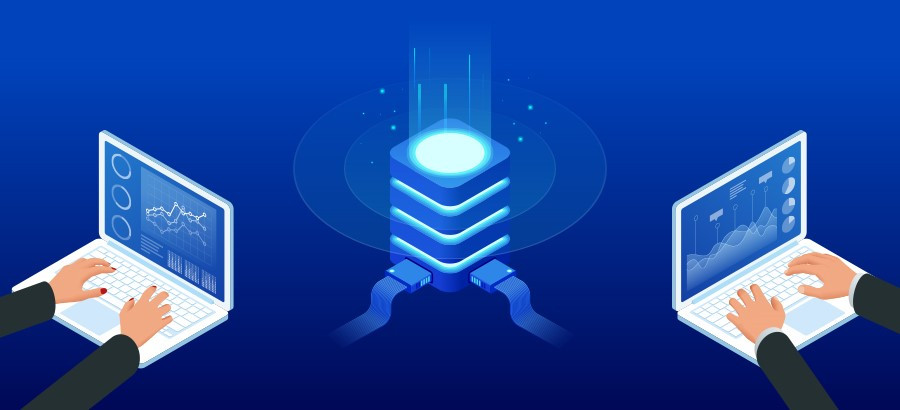- Advertising
- Bare Metal
- Bare Metal Cloud
- Benchmarks
- Big Data Benchmarks
- Big Data Experts Interviews
- Big Data Technologies
- Big Data Use Cases
- Big Data Week
- Cloud
- Data Lake as a Service
- Databases
- Dedicated Servers
- Disaster Recovery
- Features
- Fun
- GoTech World
- Hadoop
- Healthcare
- Industry Standards
- Insurance
- Linux
- News
- NoSQL
- Online Retail
- People of Bigstep
- Performance for Big Data Apps
- Press
- Press Corner
- Security
- Tech Trends
- Tutorial
- What is Big Data
Optimizing Websites for Traffic Surges: Tips and Tricks
With the disruption of industries and the work from home movement, the need for Internet-based services has never been higher. These last few months can be compared to a continuous Black Friday period for businesses in e-commerce, movie streaming platforms, messenger and video conferencing apps, audiobooks, user content-based apps, gaming, and more. Given the prolonged lockdown and restrictions, how can a company’s website, apps, and servers handle these traffic surges?

Internet Usage Growth
E-commerce, in particular, has been on a growth trajectory in the EU in the last 20 years. However, the pandemic has changed the rules of the game and the importance of the internet has sky-rocketed overnight. This short survey by Statista.com shows the growth of online media consumption by users worldwide, and by countries, in March.
Given this change, brick and mortar shops need to adapt to the fast changing world and create their online presence from scratch, while businesses already online need to focus their energy on optimizing their websites and on adjusting their server infrastructures.
Traffic Patterns
Designing a website that can handle a predictable amount of traffic is not difficult, and the server behind it can be configured quite easily. However, a successful site, such as an online store, will surely face traffic spikes. People tend to shop more during some hours of the day, some days are more active than others, and there are always special events and promotions that bring in a huge number of requests that translate into server load. As a result, a modern website or app must be prepared to handle these patterns.
Optimize Your Resources
Investing in more resources seems like the obvious solution, but this is not cost-effective. Instead of adding more CPU or RAM, you should start by optimizing the resources you currently have.
Let’s begin with the server configuration itself. A good system administrator can help you by making sure that you get the most out of your hardware. The usual improvements are:
- Disabling any unnecessary services or applications;
- Tweaking settings in order to handle as much traffic as possible;
- Having a good security setup that will block malicious attacks;
- Updating packets so that you use the newest and fastest available.
The next step is optimizing the website through various methods, such as: database tweaking, implementing a caching solution, creating a mobile-friendly version of the site, reducing image size by converting to modern formats, or avoiding unnecessary dynamic content.
Having reliable monitoring and logging systems in place is also critical, since it will allow you to know exactly the number of visitors and when the traffic increases.
High-Traffic Solutions
If everything is optimized but your site still cannot handle the traffic spikes, it is time to increase the hardware resources. However, buying a larger server is not really the best idea. A large server might be able to handle the surges, but you’ll also end up paying for those resources even when they are not needed.
One option is to choose a provider that offers auto-scaling, which means that the platform you’re using will automatically add more resources when the load is high. There are a few drawbacks: the transition is not always smooth, and auto-scaling might sometimes result in unexpected costs. For example, an external attack that causes load might be interpreted as legitimate traffic, resulting in much higher costs for your business.
Another strategy would be to move to a distributed architecture, with a fixed schedule. Some bare metal providers allow you to pay for servers on a by-the-hour rate, or even by-the-minute. This allows you to create multiple instances of your front-end or back-end servers that will only come online at specific hours, or during events such as Black Friday. This behavior can easily be controlled through scripts, or API calls. The main advantage here is a fixed price structure since you decide in advance the exact server usage.
Conclusion
Handling traffic surges is not an exact science, and even the biggest companies can struggle with unexpected spikes. During the current pandemic which has caused worldwide network congestion and a boom in the demand for online services, the environment has proved to be even more challenging. However, following the general guidelines presented in this article and choosing the right server type will help you increase your resilience and achieve a higher uptime.
How Can We Help?
If you're still undecided about which server is best for your business or project, contact us for more information and our experts can help you make the right choice. The Metal Cloud servers have been designed to close the gap between the traditional server types and to provide both the power of dedicated bare metal servers and some of the versatility of cloud machines.
About the author
Keen on future tech, marketing, and gaming, Andreea Jakab currently serves as Digital Marketer at Bigstep.
Article originally posted on European Business Magazine.
Readers also enjoyed:

A Rookie Sysadmin’s Guide to Troubleshooting Wordpress


Leave a Reply
Your email address will not be published.